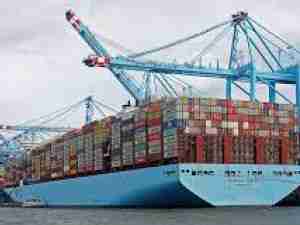Instead of sailing to another country, however, the 45-year-old father of four will help to torch, hammer and rip the fleet into pieces of money-making scrap metal, after a court ordered Bangladesh to free up its ship breaking industry.
Maritime recycling yards in the Indian subcontinent and China could see a boom that could run until 2013 as shipowners rush to get rid of ageing vessels, driven by an oversupplied freight market, low shipping rates and high steel prices.
"The restart of ship breaking has given me a new life," Hossen told Reuters on an oil-besmirched beach in Chittagong, home to one of the world's biggest ship recycling yards.
"Had it not restarted I would have been compelled to stop sending my children to school."
Hossen and other ship breakers earned a monthly average of 10,000 taka ($137), an income stream that vanished for the last year, forcing them to turn to other jobs such as unloading trucks and fixing cars.
Shipowners Hurting
The court's decision in March to lift the ban, initially triggered by fears over the industry's impact on the environment and workers' health, comes as a relief to Hossen and his fellow workers, but shipowners are hurting.
Freight rates have fallen to two-year lows this year as the expansion of the global fleet far outstripped demand, especially in the dry bulk and oil tanker markets.
The dry bulk fleet, responsible for shipping iron ore, coal and other commodities, was expected to grow 13 percent this year to top a record 600 million deadweight tonnes in 2011 despite demand rising by just 5 to 8 percent, analysts said.
Overzealous shipowners went on a buying spree before the economic downturn two years ago and those vessels are only now arriving from the shipyards.
The oversupply problem, coupled with high prices of steel and bunker fuel, have made scrapping vessels an attractive financial alternative.
A surge in the scrapping of older ships is considered key to pulling back into balance the supply and demand fundamentals in the freight market. That could happen within the next three years if the volume of ship recycling matches expectations.
"There has got to be a massive quantity of recycling to eliminate this oversupply," said Edward McIlvaney, managing director of EBM Shipbroking. "I can see it being bleak on the freight side, particularly for the dry bulk market, well into 2014 and possibly into 2015."
Scrap Money
Maritime firms were expected to scrap more than 30 million deadweight tonnes this year, surpassing last year's 26.6 million and the figure of 28.3 million in 2009, industry experts said.
If Bangladesh quickly ramps up its capacity, shipowners could scrap near the world's capacity of 38 million dwt, a level not seen for decades, McIlvaney said.
In the demolition market, the average dry bulk carrier traded above $520 per lightweight tonne in the Indian subcontinent, the highest since September 2008, according to the Baltic Exchange.
That translates into more than $10 million for a typical 25-year-old capesize carrier, the largest vessel in the dry bulk fleet.
"Demolition is continuing strongly in 2011 with the help of high commodity prices," said Theodore Ntalakos, a broker with Athens-based Intermodal Shipbrokers.
"In terms of the number of vessels, we have seen almost the same demolition fixtures as we did in all of last year."
Scrapping reached a peak of 42.58 million dwt in 1985 when Taiwan, Korea and many other countries were involved in the ship breaking business.
The industry has since undergone considerable consolidation as rising labour costs and environmental regulations forced the closure of most ship breaking yards in developed countries.
Today, four developing nations, all with an abundance of cheap labour, control more than 90 percent of the market.
"Following the










